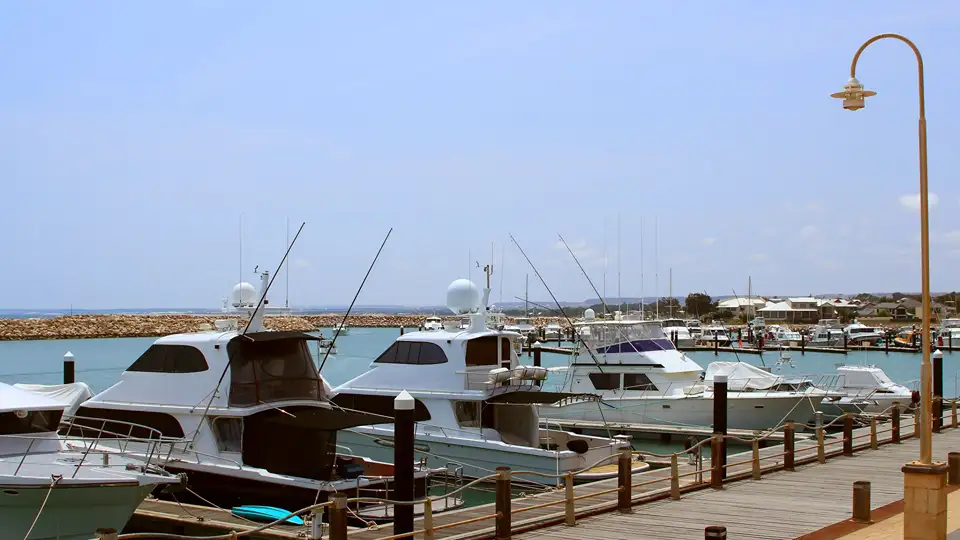Introduction
The Geraldton Fishing Boat Harbor plays a vital role in supporting Western Australia’s maritime economy, serving as a key hub for commercial fishing vessels, tourism, and coastal trade. To ensure this important harbor remains navigable and safe for year-round marine operations, periodic maintenance dredging is essential. This process involves removing accumulated sediments that naturally build up over time, allowing vessels to move safely within designated channels and berthing areas.
Recently, the Mid-West Ports Authority announced the completion of its scheduled maintenance dredging project at the harbor, marking another milestone in the harbor’s ongoing management and coastal care efforts.
Project Completion Announcement
According to the Mid West Ports Authority, the latest round of dredging operations at the Geraldton Fishing Boat Harbor has been completed. The work focused on removing naturally deposited sediments that can hinder safe vessel passage if left unaddressed.
The Authority emphasized that these maintenance efforts are part of its broader strategy to maintain harbor functionality and safety. By restoring the water depth to its original design level, the dredging ensures uninterrupted access for fishing boats, service vessels, and other harbor users.
Following the dredging, the next phase of the project will focus on relocating the dredged material, primarily clean sand, temporarily stored at Pages Beach. This material will be used for sand replenishment along the northern beaches, supporting erosion control and coastal protection.
Purpose of Maintenance Dredging
Maintenance dredging is a routine yet vital operation for harbors like the Geraldton Fishing Boat Harbor. Over time, sediment naturally accumulates due to tidal movement, wave action, and storm events. If this buildup is not removed, it can reduce navigational depth, making vessel access difficult and increasing safety risks.
Unlike capital dredging, which enlarges or deepens harbor areas, maintenance dredging simply restores existing waterways to their designed depth. This process ensures vessels continue operating efficiently without disruptions, preserving the harbor’s role as a dependable marine base for the Midwest region.
Sand Reuse and Beach Replenishment
A key highlight of this maintenance program is the sustainable reuse of dredged material for sand replenishment. The dredged sand from Geraldton Fishing Boat Harbor has been temporarily stockpiled at Pages Beach and will now be transferred to northern beaches in stages.
This approach demonstrates environmental stewardship by ensuring that natural sediments are not wasted but instead returned to the coastal system. The sand replenishment initiative will help rebuild eroded shorelines, enhance beach stability, and provide natural protection against coastal storms and rising sea levels.
By repurposing dredged material, the Mid West Ports Authority not only supports ecological sustainability but also helps maintain the scenic and recreational value of the region’s beaches.
Environmental and Economic Significance
Maintaining navigational safety at the Geraldton Fishing Boat Harbor is both environmentally and economically important. Safe harbor access supports fishing operations, marine tourism, and local trade, all of which contribute significantly to the regional economy.
Furthermore, using dredged sediment for sand replenishment aligns with sustainable coastal management practices. It minimizes the environmental footprint of dredging while helping protect habitats and shoreline infrastructure. This balance between operational needs and environmental care is central to the Port Authority’s coastal management philosophy.
The project reinforces Geraldton’s position as a maritime hub that balances development with ecological responsibility, ensuring long-term benefits for local communities and industries alike.
Future Plans by Mid-West Ports Authority
The completion of maintenance dredging at the Geraldton Fishing Boat Harbor marks just one part of the Mid West Ports Authority’s broader coastal management strategy. Upcoming efforts will include ongoing monitoring of sediment movement, beach profiles, and harbor depth conditions to efficiently plan future dredging cycles.
Additionally, the Authority will continue its sand replenishment programs to sustain the health of northern beaches and strengthen resilience against erosion and storm surges. These proactive measures are crucial in adapting to changing environmental conditions and ensuring the long-term viability of the region’s marine infrastructure.
Conclusion
The successful completion of maintenance dredging at the Geraldton Fishing Boat Harbor showcases the Mid West Ports Authority’s commitment to safe navigation, environmental care, and sustainable resource use. By coupling dredging with sand replenishment, the project not only secures the harbor’s operational efficiency but also enhances the resilience of Geraldton’s coastline.
Through strategic dredging and responsible sediment management, the Authority continues to protect valuable marine assets, support economic development, and uphold environmental stewardship, ensuring the Geraldton coast remains vibrant and navigable for years to come.
